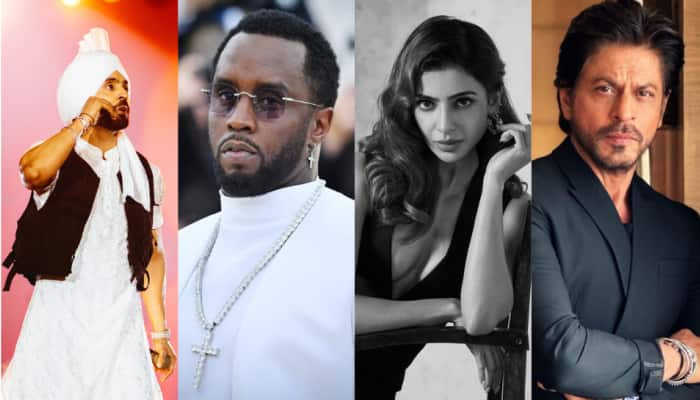Gujarat Assembly elections: A look at how Modi govt's policies have benefitted Muslims since 2014
Several schemes run by the Centre have greatly benefitted Muslims. Some of these are Naya Savera, Seekho Aur Kamao, Nai Manzil, Nai Roshni, Nai Udaan, Gharib Nawaz Employment Scheme and Shaadi Mubarak Scheme.
Trending Photos
)
New Delhi: Elections in Gujarat are around the corner, and the focus has once again shifted to Muslims of the state. While new entrant AIMIM is trying hard to polarise Muslim votes, some others are trying to reopen the wounds of 2002 to cut ice with the community. At his rallies, AIMIM’s Asaduddin Owaisi has repeatedly accused the BJP of isolating Muslims. He says leave alone political representation, the BJP has done nothing for the community’s socio-economic upliftment. However, the data does not back his charges.
Earlier this year, the then minority affairs minister Mukhtar Abbas Naqvi had said in Parliament, “Out of the 2.31 crore houses built under PM Awas Yojana, 31 per cent were allocated in minority-dominated areas; 33 per cent beneficiaries of the PM Kisan Samman Nidhi were minorities; and of the 9 crore beneficiaries of PM Ujjwala Yojana, 37 per cent were from minority communities.”
He also said 36 per cent of beneficiaries of the PM MUDRA Yojana were minorities.
This clearly shows that allocations for minorities have been much above their share of the population. Naqvi was quoting data from a study on the Narendra Modi government’s various welfare schemes.
Several schemes run by the minority affairs ministry have greatly benefitted Muslims. Some of these are Naya Savera, Seekho Aur Kamao, Nai Manzil, Nai Roshni, Nai Udaan, Gharib Nawaz Employment Scheme and Shaadi Mubarak Scheme. Apart from a 10 per cent reservation in jobs and academic institutions for EWS minorities, the government has introduced several scholarships and fellowships for them.
Naya Savera provides free coaching and scholarships to minority students. As per government records, it has benefitted over 30,000 students in the last three years. Of these, 9,040 students are from UP; 2,899 from Karnataka; 2,880 from Maharashtra; 2,380 from West Bengal; 2,260 from MP and 1,700 from Andhra Pradesh.
Nai Udaan gained prominence after the list of successful UPSC candidates was released earlier this year. Several successful candidates from the Muslim community were coached as part of the scheme. Nai Udaan s financial support to minorities appearing in central and state civil services, and increase their representation in these jobs.
The ‘Padho Pardesh’ scheme provides education loan subsidies to minority students for overseas higher studies. ‘Nai Manzil’ provides formal school education and skill upliftment of school dropouts. ‘Nai Roshni’ grooms leadership in women belonging to minority communities. The ‘Seekho aur Kamao’ is another skill development scheme for youth between 14 and 35 years of age, aiming to provide employment to minorities.
As per Lok Sabha data, after 2014-15, a whopping 5.2 crore minority scholarships have been disbursed throughout the country compared to 3.03 crore before 2014-15.
As many as 20 lakh more minority students received education scholarships under the Narendra Modi government’s first term than during the second UPA regime. While 3.14 crore minority students secured government scholarships between 2014 and 2019, the number stood at 2.94 crore for the second Manmohan Singh term (2009-14). This translates to a 7 per cent rise in beneficiaries under the Modi government.
Over 2.37 crore Muslim students got scholarships under the first Modi government. Under UPA-II, the figure was 2.33 crore. As per reports, the Centre spent Rs 8,715.4 crore on scholarships from 2014-19, against Rs 5,360.4 crore from 2009-14.
In over 1,300 minority concentration areas spread across 308 districts, the government has built schools, colleges, additional classrooms, hostels, labs, computer rooms, toilets, ITIs, polytechnics, skill training centres, working women hostels, hospitals, health centres, anganwadis, drinking water projects and markets. Additionally, ‘Hunar Haats’ are preserving and promoting India’s indigenous and traditional arts and crafts.
The minority affairs ministry’s budget in 2013-14 was Rs 3,511 crore, which went up to Rs 3,711 crore in 2014-15. For 2018-19 and 2019-20, the budget was Rs 4,700 crore each. In the budget presented for 2022-23 by finance minister Nirmala Sitharaman, it was proposed to give Rs 5,020.50 crore to the minority affairs ministry.
Stay informed on all the latest news, real-time breaking news updates, and follow all the important headlines in india news and world News on Zee News.
Live Tv







)
)
)
)
)
)
)
)
)
)
